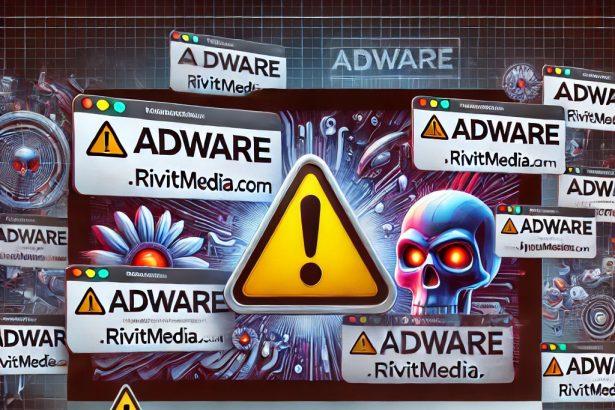If you’ve discovered PUA:Win32/RDPWrap on your system—whether it’s listed in your apps, running as a background process, or flagged by your antivirus—then you’re likely dealing with adware. While its name might sound technical or even legitimate, this program is anything but. RDPWrap is a Potentially Unwanted Application (PUA) that floods users with intrusive ads and opens the door to dangerous content.
Let’s break down what RDPWrap actually is, what it does, and why it’s considered a risk to your computer and your data security.
Threat Summary
| Attribute | Details |
|---|---|
| Name | PUA:Win32/RDPWrap |
| Threat Type | Adware, Potentially Unwanted Application (PUA) |
| Detection Names | PUA:Win32/RDPWrap (Microsoft Defender), Adware.RDPWrap, Trojan.GenericKD |
| Symptoms of Infection | Pop-up ads, browser redirects, slow performance, new unknown software |
| Potential Damage | Ad exposure to scams/malware, performance lag, privacy/data risks |
| Known Distribution | Software bundling, freeware sites, cracked software, malicious ads |
| Danger Level | Medium to High – mostly due to scam/malware risks |
| Associated Emails | None reported as of now |
| Related Adware | Tao Raiqsuv Utils, Klio Verfair Tools |
What is PUA:Win32/RDPWrap?
PUA:Win32/RDPWrap is a piece of adware that exploits system vulnerabilities and user permissions to display unsolicited ads, which may lead to phishing pages, scam offers, or direct malware downloads. While it may not be as destructive as a ransomware virus, its presence should not be underestimated.
It can silently infiltrate your system bundled with free downloads, pirated software, or shady installers. Once in, it bombards your device with pop-ups, banners, and redirects. Worse yet, many of these ads are potentially malicious, attempting to trick you into clicking on fraudulent or infected links.
Why RDPWrap is a Real Concern
RDPWrap’s primary goal is to monetize user attention through relentless ad campaigns. However, not all ads are benign. Many redirect users to scam sites, push fake software updates, or try to phish sensitive information such as login credentials or credit card details.
Moreover, RDPWrap doesn’t always operate alone. It might open the floodgates for other malware strains, acting as a backdoor for spyware, trojans, or browser hijackers. The risk escalates significantly if a user interacts with the ads it delivers.
Common Symptoms of RDPWrap Infection
- Your screen is constantly filled with pop-up ads and banners, even when you’re not browsing.
- You experience frequent browser redirects to shady or irrelevant websites.
- Your system runs noticeably slower, especially after startup.
- New apps or extensions appear that you don’t remember installing.
- Security warnings or antivirus alerts become more frequent.
Manual Adware Removal Process (Windows & Mac)
Step 1: Identify and Uninstall Suspicious Applications
For Windows Users
- Open Task Manager by pressing
Ctrl + Shift + Esc. - Navigate to the “Processes” tab and search for unknown or high-resource-consuming processes.
- If you detect anything suspicious, right-click and select “End Task.”
- Go to
Control Panel>Programs>Programs and Features. - Locate and uninstall any unfamiliar programs.
For Mac Users
- Open
Finderand click onApplications. - Identify and move any suspicious applications to the
Trash. - Empty the
Trash. - Check
System Preferences>Users & Groups>Login Itemsfor unknown startup programs and remove them.
Step 2: Remove Malicious Browser Extensions
Google Chrome
- Open Chrome, click
Menu(three dots) >Extensions. - Locate and remove unknown extensions.
- Reset Chrome:
Settings>Reset settings> “Restore settings to their original defaults.”
Mozilla Firefox
- Click
Menu>Add-ons and themes. - Remove suspicious extensions.
- Reset Firefox:
Help>More troubleshooting information> “Refresh Firefox.”
Safari (Mac)
- Open Safari, go to
Preferences>Extensions. - Delete unknown extensions.
- Reset Safari:
History> “Clear History.”
Microsoft Edge
- Click
Menu>Extensions. - Remove any unfamiliar extensions.
- Reset Edge:
Settings>Reset settings> “Restore settings to their default values.”
Step 3: Delete Adware-Associated Files and Folders
For Windows Users
- Press
Win + R, type%AppData%, and press Enter. - Locate and delete suspicious folders.
- Repeat for
%LocalAppData%,%ProgramData%, and%Temp%.
For Mac Users
- Open Finder and press
Shift + Command + G, then enter~/Library/Application Support/. - Remove any suspicious folders.
- Repeat for
~/Library/LaunchAgents/,~/Library/LaunchDaemons/, and~/Library/Preferences/.
Step 4: Flush DNS Cache to Remove Adware Traces
For Windows Users
- Open
Command Promptas Administrator. - Type
ipconfig /flushdnsand press Enter.
For Mac Users
- Open
Terminal. - Enter
sudo killall -HUP mDNSResponderand press Enter.
Step 5: Restart Your System
Perform a reboot to apply the changes and ensure the removal process is complete.
Automatic Adware Removal Using SpyHunter (Windows & Mac)
For an effortless and effective solution, use SpyHunter, a powerful anti-malware tool designed to detect and remove adware completely.
Step 1: Download SpyHunter
Click the link to download SpyHunter: Download SpyHunter Here.
Step 2: Install SpyHunter
Follow the installation guide based on your operating system:
For Windows Users
- Run the downloaded
.exefile. - Follow the installation instructions.
- Launch SpyHunter and allow it to update its malware database.
For Mac Users
- Open the downloaded
.dmgfile. - Drag and drop SpyHunter into
Applications. - Open SpyHunter and let it update its database.
Step 3: Scan and Remove Adware
- Open SpyHunter.
- Click
Start Scan. - Wait for the scan to complete.
- Click
Fix Threatsto remove detected malware.
Step 4: Restart Your Computer
After SpyHunter removes all threats, restart your system to ensure all adware components are fully removed.
Conclusion
While PUA:Win32/RDPWrap might seem like just a bothersome nuisance, its potential to lead you into dangerous online traps makes it a significant threat. The longer it stays on your device, the higher the chance that you’ll be exposed to malware, phishing scams, or data theft. Identifying the threat is the first step—now it’s critical to act swiftly and remove it using reliable security tools.




